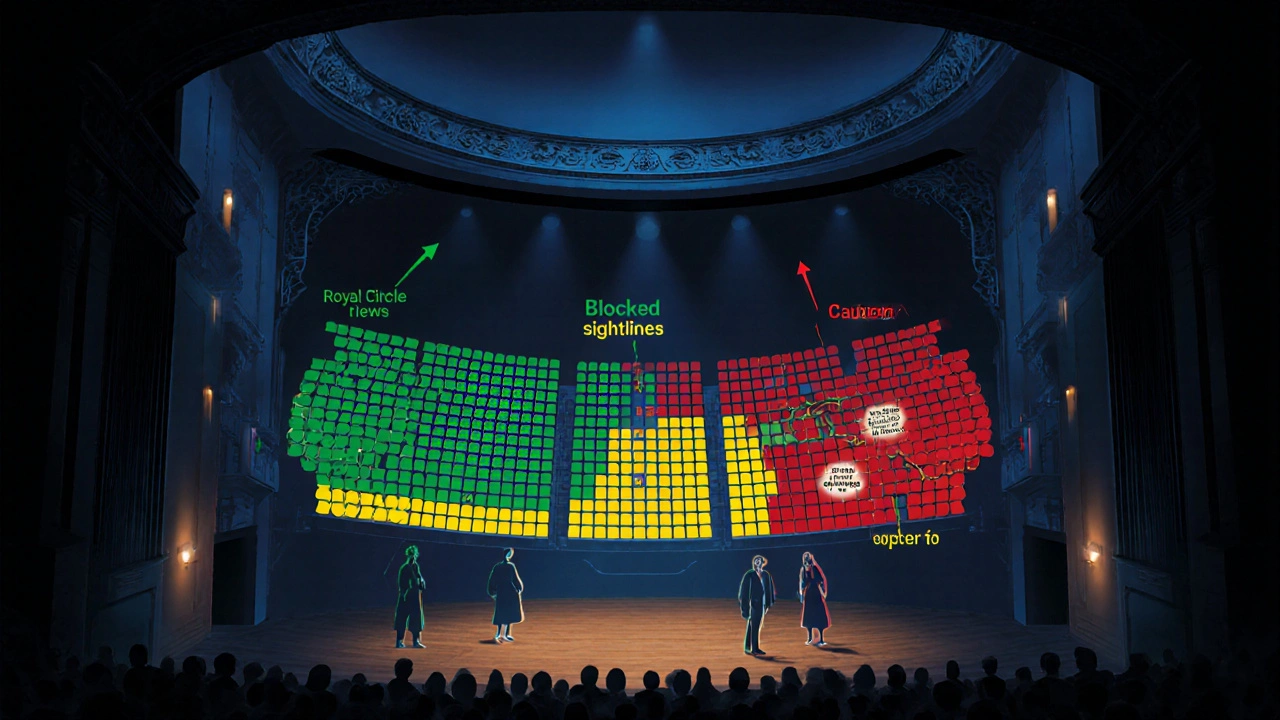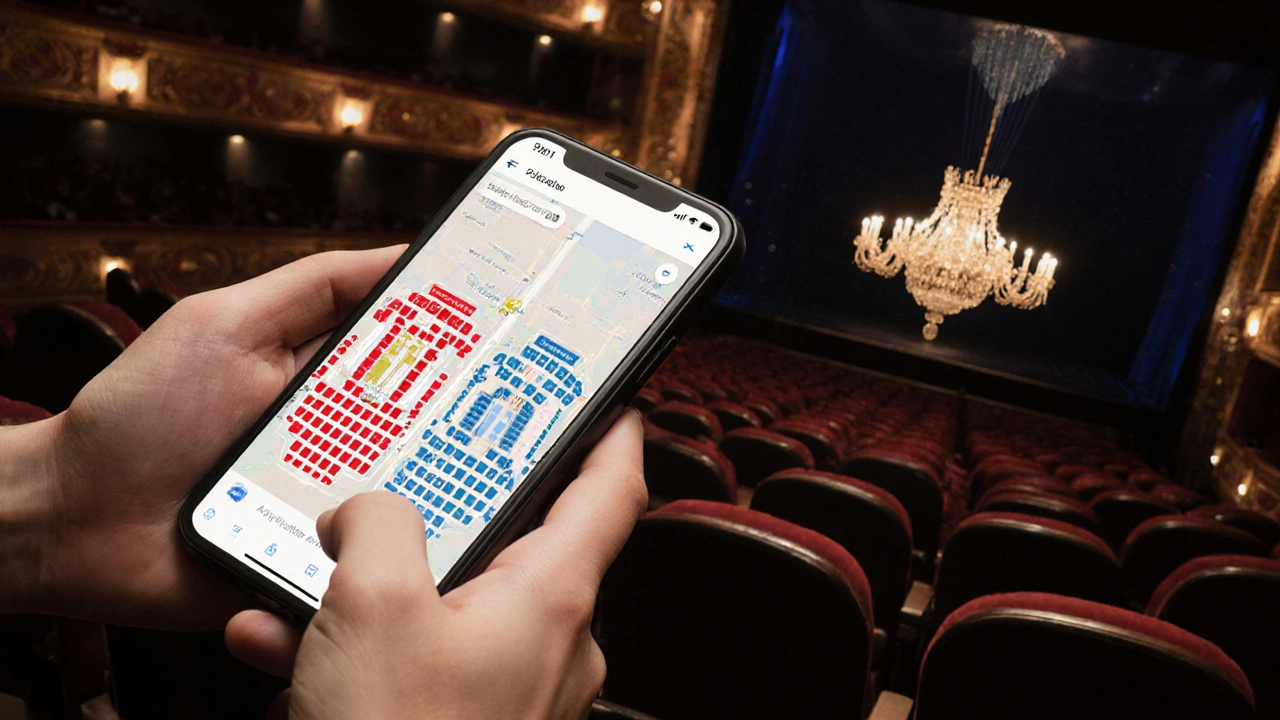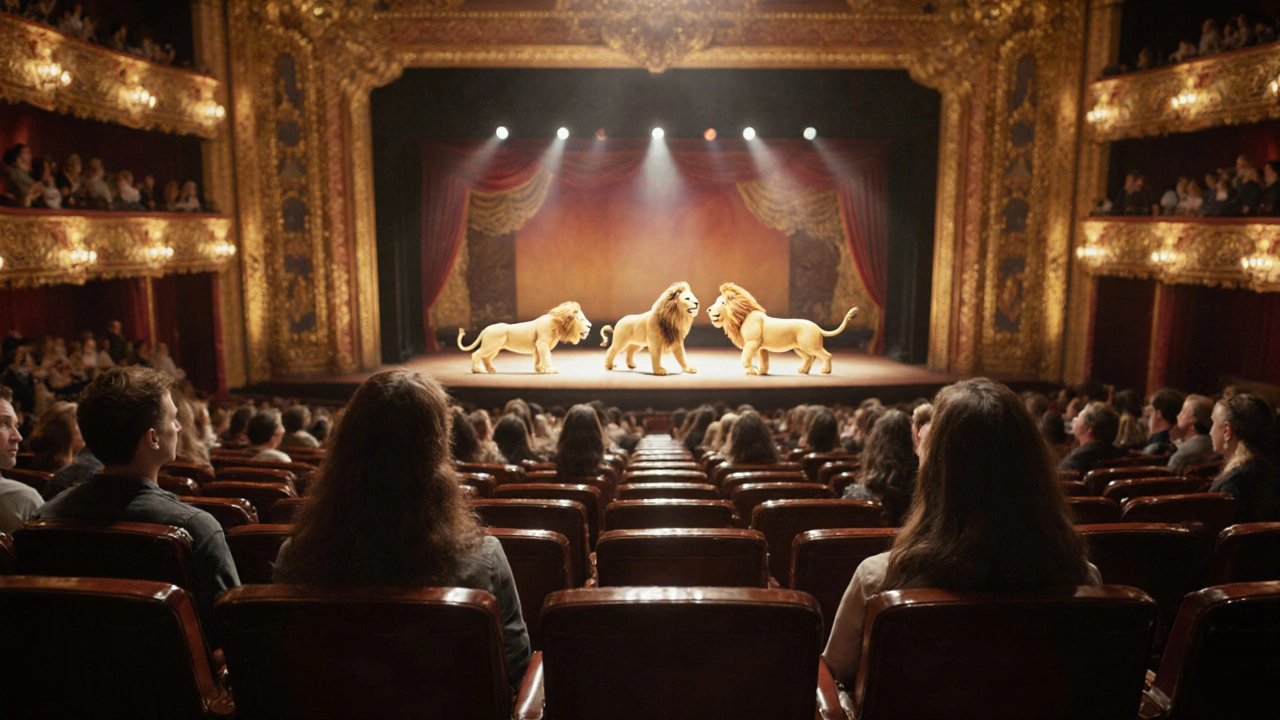Walking into a London theatre, you’re not just buying a ticket-you’re buying a view. One wrong row, and you’re staring at a headrest instead of the lead actor’s face. A few rows too far back, and the dialogue gets lost. You’ve paid £80 for Hamilton or The Lion King, and you don’t want to miss a single moment. The truth? Most people pick seats based on price alone. That’s a mistake.
Why seating maps matter more than you think
London’s West End has 40+ major theatres, each with its own shape, slope, and quirks. The Drury Lane stage is deeper than the Lyceum’s. The Royal Opera House has a steep balcony. The Palace Theatre’s side seats cut off the stage right corner. No two theatres are the same. A seat that’s perfect in one venue might be terrible in another.That’s why you need to check the seating map before you click ‘Buy’. It’s not about avoiding the cheapest seats. It’s about finding the seats that give you the full experience-the actors’ expressions, the choreography, the set details. A 2024 survey by Theatre Weekly found that 68% of London theatregoers regret their seat choice at least once. Most of them didn’t check the map.
How to read a theatre seating map
Theatre maps look confusing at first. But they follow a simple logic. Here’s what to look for:- Stalls (orchestra): Ground level. Closest to the stage. Best for detail, but can be too close if you’re in the front row.
- Royal Circle (dress circle): First balcony. Often the sweet spot-good height, clear view, less neck strain.
- Upper Circle: Higher balcony. Good value, but you might miss facial expressions in intimate scenes.
- Boxes: Side seats, often with partial views. Great for atmosphere, but avoid if you want the full stage.
- Gallery: Top level. Budget-friendly, but far away. Only worth it for big musicals with big sets.
Look for color codes on the map. Green usually means ‘excellent view’. Yellow means ‘good with caveats’. Red means ‘limited view’. Some sites even show blind spots-like pillars blocking sightlines or overhangs hiding the top of the stage.
Best seats in London’s top theatres
Let’s cut through the noise. Here’s where to sit in five major West End theatres, based on real audience feedback and stage design analysis:
| Theatre | Best Rows | Why These Seats | Avoid These |
|---|---|---|---|
| Palace Theatre (The Lion King) | Rows J-M, Seats 12-22 | Centered view, perfect height for costumes and puppetry, no overhang | Rows A-C (too close), side boxes (missed wings) |
| Lyceum Theatre (The Lion King) | Rows G-I, Seats 10-18 | Optimal balance of proximity and elevation. Clear view of the entire stage. | Rows P-R (too far back), extreme left/right (obstructed by pillars) |
| Drury Lane (Moulin Rouge!) | Rows L-N, Seats 8-20 | Great elevation for dance numbers, no sightline obstruction from the proscenium | Front stalls (neck craning), upper circle (missed facial details) |
| Prince of Wales Theatre (Wicked) | Rows F-H, Seats 14-24 | Centered, elevated enough to see the flying effects, close to the action | Side boxes (cut-off stage), last two rows (too distant for subtle acting) |
| Royal Opera House (Les Misérables) | Rows K-M, Seats 10-20 | Steep slope means even back rows have good sightlines. Best for grand sets. | Extreme side stalls (obscured by pillars), Gallery (too far for emotion) |
Notice a pattern? The sweet spot is almost always middle rows, center section. You’re not too close to feel overwhelmed. Not too far to lose detail. And you’re aligned with the stage’s focal point-the actors’ eye level.

What you’ll miss in bad seats
Let’s say you’re in Row B, Seat 1. You’re front row center. Sounds great, right? But in Hamilton at the Victoria Palace, you’ll miss the choreography. The dancers are too close. You’ll see their feet, but not their full movements. You’ll get a head-on view of the lead actor’s nose.
In Phantom of the Opera at Her Majesty’s, the chandelier swings low. If you’re in the first 10 rows, you’ll feel it-literally. But you’ll also miss the full reveal of the stage transformation behind the Phantom. The magic happens in the middle distance.
Side seats? They’re risky. In Les Misérables, the barricade scene is on the right. If you’re on the far left, you’ll see half the action. In Wicked, Elphaba’s big entrance is stage left. Sit too far right, and you’ll hear the song, but not see the costume reveal.
How to check sightlines before you buy
Don’t rely on generic advice like ‘sit in the middle’. Use these tools:
- Theatre-specific maps: Official sites like London Theatre Direct or TodayTix show interactive maps with blind spot markers.
- SeatGuru: Type in the show and theatre. Users upload photos from their actual seats. See what it really looks like.
- YouTube walkthroughs: Search ‘[Theatre Name] seat view [Show Name]’. Fans post real footage from their seats.
- Ask the box office: Call and say, ‘I’m looking for the best view for [show]. What rows do you recommend?’ They know the quirks.
Pro tip: If you’re buying last-minute, avoid rows ending in 0 or 5. Those are often the ones left over because they’re tricky-too close, too far, or blocked. Go for odd numbers like 11, 13, 17. They’re usually better.

Special cases: accessibility, kids, and comfort
If you’re using a wheelchair, most theatres have dedicated accessible seats with unobstructed views. But don’t assume they’re in the back. Many have front-row accessible spots with excellent sightlines. Always ask.
Bringing kids? Avoid the very front. They’ll be overwhelmed. Also skip the back of the upper circle-it’s dark, hard to see, and the acoustics fade. Rows H-J in the Royal Circle work best. They’re close enough to keep attention, high enough to see over the person in front.
Back pain? Avoid stalls. The seats are narrow and upright. The Royal Circle has more legroom and reclining options. If you’re tall, skip the front rows. Your knees will hit the seat in front.
Final tip: Trust your eyes, not the price
It’s tempting to grab the £30 ticket in the gallery. But if you’re squinting at the stage, you’re not getting your money’s worth. A £65 seat in the sweet spot feels like £100. You’ll remember the show. You’ll talk about it. You’ll go back.
On the flip side, don’t overpay for a box seat just because it’s ‘exclusive’. You’re paying for the view of one actor, not the whole production.
The best seats aren’t the cheapest. They’re the ones that let you forget you’re sitting in a theatre at all. That’s the magic. And it’s all in the map.
What are the best seats in a London theatre for a musical?
For most musicals, the best seats are in the middle of the Royal Circle-rows G to I, seats 10 to 20. This gives you a clear, elevated view of the stage without being too far back. You’ll see choreography, costumes, and facial expressions clearly. Avoid front stalls (too close) and the very back of the upper circle (too distant).
Are side seats in the theatre worth it?
Side seats, especially boxes, are great for atmosphere but risky for sightlines. In shows like Wicked or Les Misérables, key moments happen on one side of the stage. If you’re on the opposite side, you’ll miss half the action. Only choose side seats if you’re okay with partial views or if you’re on a tight budget.
Is it better to sit in the stalls or the circle?
It depends on the show. For intimate plays or dramas, stalls (especially rows D-F) give you emotional closeness. For musicals with big sets, flying effects, or choreography, the Royal Circle is better. You get more depth and perspective. Stalls can feel claustrophobic if you’re too close.
How do I know if a seat has a blocked view?
Check interactive seating maps on official theatre websites or platforms like TodayTix and SeatGuru. They highlight blocked views with red markers. Look for pillars, overhangs, or railings that might obstruct your line of sight. User photos and reviews often confirm these issues.
Can I trust the theatre’s recommended seats?
Yes, but only if they’re specific. General advice like ‘best value’ or ‘popular choice’ isn’t enough. Look for recommendations tied to the show, not just the theatre. If they say, ‘Rows M-O for Moulin Rouge!’, that’s reliable. If they just say ‘middle circle’, dig deeper.
Are there any theatres in London with universally good seats?
The Royal Opera House and the Lyceum have some of the most consistent sightlines across all levels because of their steep rake and clear stage design. The Palace Theatre is also reliable for musicals. But even in these venues, avoid the very front and the extreme sides. No theatre is perfect-every seat has trade-offs.
What’s the worst seat in a London theatre?
The worst seats are usually the very front row of the stalls in theatres with deep stages (like Drury Lane) or the extreme side boxes in theatres with wide stages (like the Adelphi). You’ll miss stage movement, see only half the action, or get a view of the ceiling. If you’re forced into one, ask for a refund or exchange before the show starts.
If you’re planning your next London theatre trip, take five minutes to study the seating map. It’s the difference between watching a show and living it.
